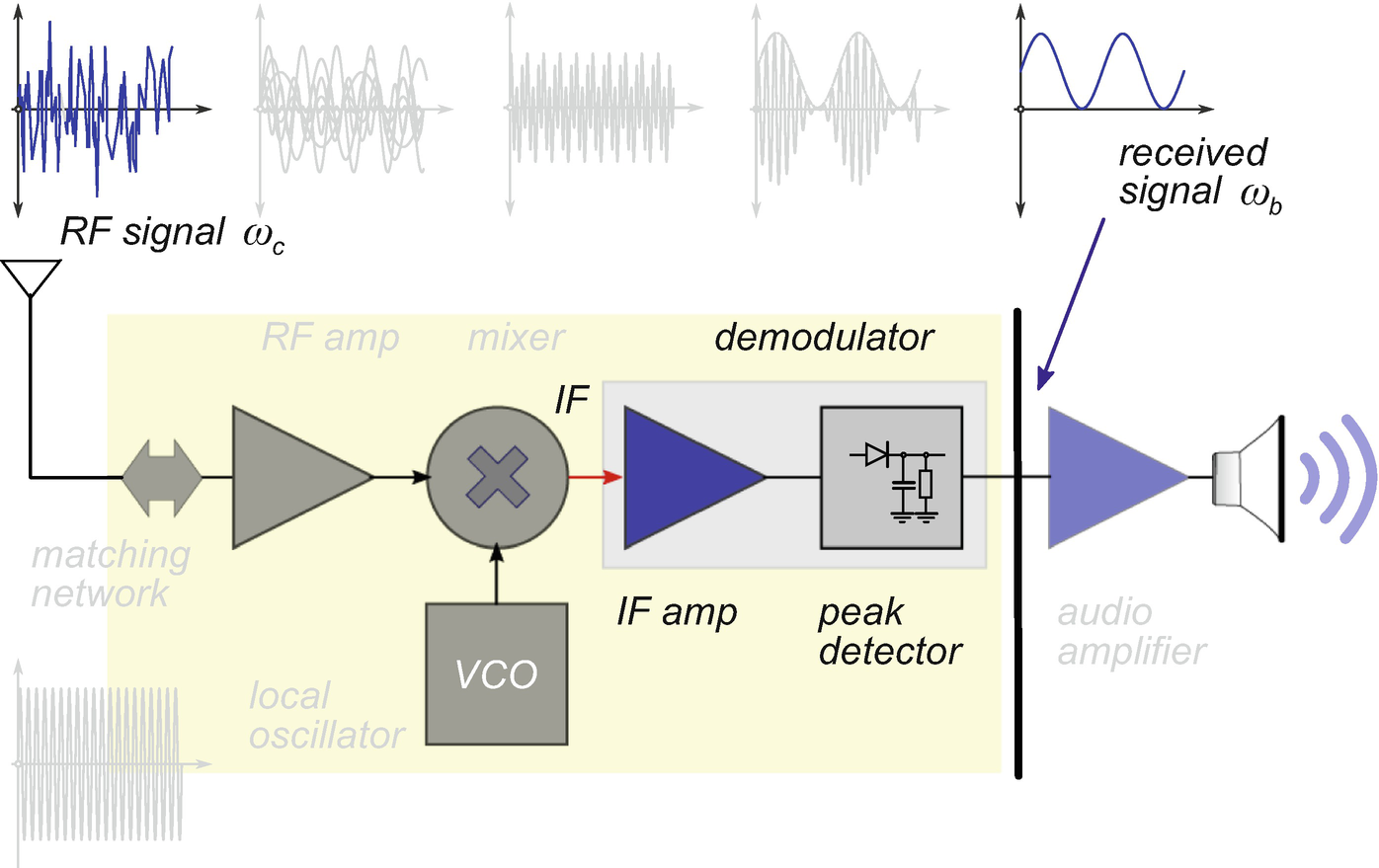With TD-OCT the signal passes through demodulation logarithmic amplifiers which compress the data and make the large SNR signal more assessable. A modem from mo dulator dem odulator used in bidirectional communication can.

What Is Modulation And Demodulation Definition Types Differences Video And Faqs
This is important not only for FM and PM demodulation but also for any other situation in which you need to distinguish the contents of the upper and lower sidebands of the carrier eg SSB.

Demodulation definition in electronics. Demodulation n Electronics the act or process by which an output wave or signal is obtained having the characteristics of the original modulating wave or signal. Once the signal has been received filtered and amplified it is necessary to recover the original modulation from the carrier. A demodulator is an electronic circuit that is used to recover the information content from the modulated carrier wave These terms are traditionally used in connection with radio receivers but many other systems use many kinds of demodulators.
The modulation is extracted from the incoming overall received signal. The process of demodulation for signals using amplitude modulation can be achieved in a number of different. Modulation is the process of encoding information in a transmitted signal while demodulation is the process of extracting information from the transmitted signal.
Demodulation is the act of extracting the original information-bearing signal from a modulated carrier wave. FM demodulation is a key process in the reception of a frequency modulated signal. Whenever a frequency conversion heterodyning occurs in an SDR particularly in the analog front end the I and Q components are handled differently.
Modulation and demodulation. Modulation the process in which the carrier signal is varied according to the information bearing signal also called the modulating signal. It is expected to convert the frequency variations in FM wave at its input into amplitude variations at its.
The circuit in which restoration is achieved is called the DETECTOR or DEMODULATOR both of these terms are used in NEETS. Demodulation is the opposite process of modulation where the varying amplitude frequency or phase of carrier signal is extracted to construct the original the message signal. Demodulation is the reverse process of again recovering the original message.
In a radio telephony channel it may suffice at the receiver site to get an. A demodulator sometimes detector is a circuit that performs demodulation the inverse of modulation. In pulse duration modulation PDM the amplitude of the pulse is kept constant and only the variation in width is noticed.
Demodulation is basically extracting the original information carrying signal from a carrier wave. The output of an ideal detector must be an exact reproduction of the modulation existing on the rf wave. A demodulator is an electronic circuit that is mainly used to recover the information content from the modulated carrier wave.
FM demodulator or detector is basically a frequency to amplitude converter. Transmission through the channel in consideration. Many factors influence how faithfully the extracted information replicates the.
Electronics electronics the act or process by which an output wave or signal is obtained having the characteristics of the original modulating wave or. The primary purpose of demodulation is to remove the carrier frequency Doppler shift. Modulation is the process of superimposing a low frequency signal on a high frequency carrier signal OR The process of modulation can be defined as varying the RF carrier wave in accordance with the intelligence or information in a low frequency signal OR Modulation is defined as the precess by which some characteristics usually amplitude frequency or phase of a carrier is varied in.
Demodulation is defined as extracting the original information-carrying signal from a modulated carrier wave. During modulation some characteristics it can be amplitude frequency or phase is varied in accordance with the original information-bearing signal that has to be transmitted. Demodulation is the process by which the original information bearing signal ie.
It is this process that is called demodulation or detection. This is an advantage over. It is a type of Pulse Time Modulation PTM technique where the timing of the carrier pulse is varied according to the modulating signal.
The term demodulator is used because the demodulation process is considered to be the opposite of modulation. Electronics the act or process by which an output wave or signal is obtained having the characteristics of the original modulating wave or signal. The reverse of modulation.
After demodulation we get the original modulating signal at the demodulation output. Pulse width modulation or PWM is a commonly used control technique that generates analog signals from digital devices such as microcontrollers. The reverse of modulation.
The signal thus produced will have a train of pulses and these pulses will be in the form of square waves. The scope of the demodulation depends on the type of data being send. Where as a demodulator is an circuitry that is utilized to recover original information or data from the modulated signal.
Analog modulation refers to the process of transferring analog low frequency baseband signal like an audio or TV signal over a higher frequency carrier signal such as a radio frequency band. Demodulation of FM Waves The demodulation process of FM waves is exactly opposite to that of the frequency modulation. Thus at any given time the wave will either be.

Amplitude Demodulation National Instruments

Modulation And Demodulation Working Types Of Modulation Examples

Am And Fm Signal Demodulation Springerlink
How To Demodulate An Am Waveform Radio Frequency Demodulation Electronics Textbook

Modulation And Demodulation Working Types Of Modulation Examples